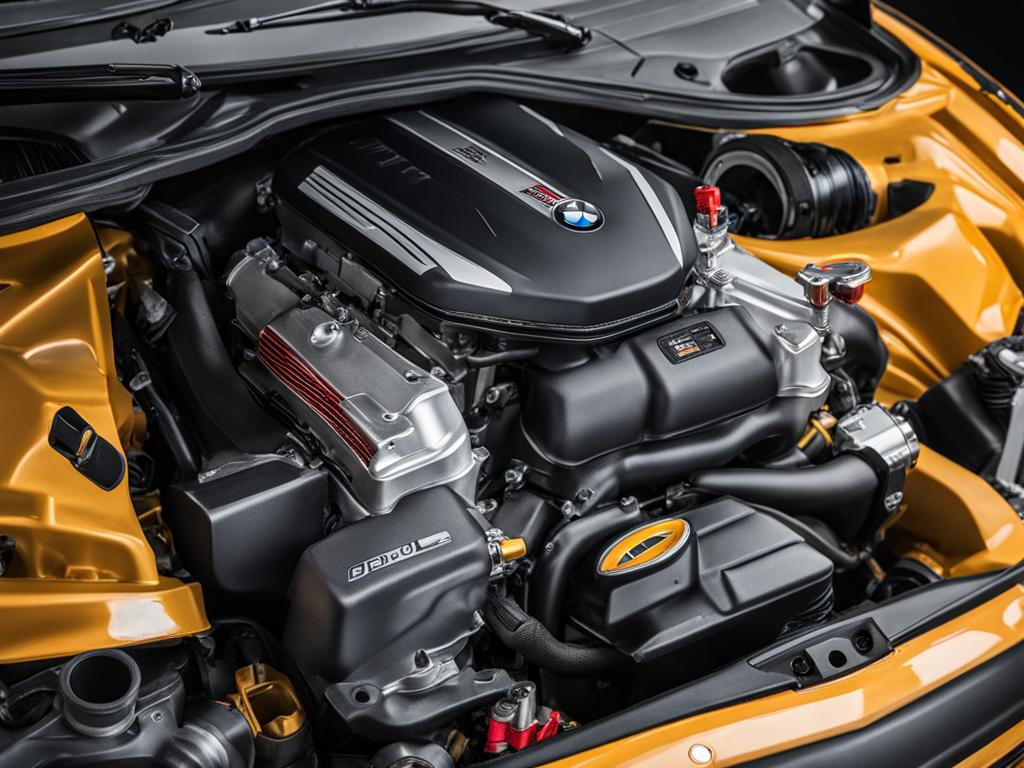BMW Restraint System Malfunction Fix Guide
If you own a BMW, it’s important to be aware of the potential malfunctions that can occur in the restraint system. The restraint system in your BMW, which includes the airbags and seatbelts, plays a crucial role in keeping you and your passengers safe in the event of a collision. However, issues can arise that affect the proper functioning of these safety features.
Restraint system malfunctions in BMW vehicles can be caused by various factors. Low battery voltage and faulty passenger occupancy sensors are among the most common culprits. These problems can trigger warning messages on the dashboard, such as “Restraint System Malfunction” or “Passenger Restraint System Fault,” and may cause the airbag light to stay on.
It is essential to address restraint system malfunctions promptly to ensure the safety of everyone in the vehicle. Consulting a certified BMW technician is recommended, as they have the expertise to diagnose and repair these issues effectively.
Key Takeaways:
- Restraint system malfunctions in BMW vehicles can affect the proper functioning of the airbags and seatbelts.
- Low battery voltage and faulty passenger occupancy sensors are common causes of restraint system malfunctions.
- Warning messages on the dashboard and an illuminated airbag light are indicators of restraint system issues.
- Having your vehicle diagnosed and repaired by a certified BMW technician is crucial for ensuring the safety of the occupants.
- Other potential causes of restraint system malfunctions include faulty airbag modules, defective seat belt tensioners, wiring issues, control module failure, and water damage.
Understanding BMW Restraint Systems
The BMW restraint system plays a critical role in ensuring the safety of vehicle occupants during a collision. This system consists of various components, including airbags, seatbelts, and other safety features, all meticulously designed to minimize injuries and protect lives.
BMW Airbags: The airbags in a BMW are strategically positioned throughout the vehicle to provide optimal protection. These airbags are typically located in the steering wheel, passenger-side dashboard, and curtains between the A and C pillars. In the event of a severe collision, the airbags deploy rapidly to minimize head and chest injuries.
BMW Seatbelts: BMW seatbelts are equipped with pre-tensioners, which are mechanisms that automatically tighten the seatbelts across the passengers’ lap and chest upon impact. This feature helps prevent excessive forward movement, reducing the risk of injury. Seatbelts are a crucial element of the restraint system, working in tandem with the airbags to ensure the safety of the occupants.
By integrating these safety features, the BMW restraint system aims to reduce the impact of a collision and protect the vehicle’s occupants. It is a testament to BMW’s commitment to safety and innovation in automotive engineering.
| Component | Function |
|---|---|
| Airbags | Deploy rapidly to minimize head and chest injuries during a severe collision |
| Seatbelts | Equipped with pre-tensioners to prevent excessive forward movement |
| Other Safety Features | Additional measures to enhance occupant protection in various collision scenarios |
Common Causes of BMW Restraint System Malfunction
BMW restraint system malfunctions can occur due to various factors, compromising the effectiveness of crucial safety features such as airbags and seat belts. Understanding these common causes can help drivers identify potential issues and take appropriate action:
- Airbag module failure: Faulty airbag modules can lead to the malfunctioning of the airbag system, impairing its ability to deploy properly in a collision.
- Seat belt tensioner issues: Problems with the seat belt tensioners can prevent them from tightening properly during a collision, compromising occupant restraint.
- Wiring problems: Faulty or damaged wiring in the restraint system can cause communication errors and malfunctions, leading to a compromised safety system.
- Water damage: Exposure to water, such as from flooding or leaks, can result in electrical damage and corrosion, affecting the performance of the restraint system components.
Beware of these common causes of BMW restraint system malfunctions, as they can put the safety of vehicle occupants at risk. Prompt identification and resolution of these issues are crucial to ensure the proper functioning of this vital safety system.

Case Study: Water Damage Impact
Water damage is of particular concern when discussing BMW restraint system malfunctions. In one case, a BMW owner experienced a malfunctioning restraint system after heavy rainfall resulted in water seeping into the car’s wiring system. The water caused corrosion and electrical shorts, leading to the failure of the airbag control module and seat belt tensioners.
The example highlights the significance of protecting the vehicle from water damage and addressing any leaks promptly. This will help prevent potential electrical malfunctions and ensure the proper operation of the restraint system.
Diagnosing and Fixing BMW Restraint System Malfunction
If you encounter a BMW restraint system malfunction, it is crucial to address the issue promptly to ensure the safety of the vehicle occupants. To diagnose and fix these malfunctions effectively, follow the recommended steps:
- Begin by connecting an OBD-II scanner to the vehicle’s diagnostic port. This will allow you to retrieve any error codes related to the restraint system.
- Review the error codes obtained from the OBD-II scanner. These codes will provide valuable information about the specific restraint system components or subsystems that are experiencing issues.
- Consult the BMW manufacturer’s documentation or online resources to interpret the error codes and identify the probable causes of the malfunction. This step will help you narrow down the possible faulty components.
- If you are confident in your automotive knowledge and skills, you may attempt a DIY repair of the identified component. However, it is recommended to seek the assistance of a certified BMW technician for complex or safety-critical repairs.
- A certified BMW technician will possess the training, expertise, and access to specialized tools and software necessary to diagnose and fix complex restraint system issues accurately.
- Ensure that any replacement parts used during the repair are genuine BMW parts to maintain the integrity and safety of the vehicle’s restraint system.
- After completing the necessary repairs, conduct a comprehensive test of the restraint system to verify its proper functioning. This test may involve simulating various crash scenarios to ensure that the airbags and seatbelts deploy as intended.
By following these steps and relying on the expertise of a certified BMW technician, you can diagnose and fix BMW restraint system malfunctions effectively, restoring the safety of your vehicle.
| Diagnosing and Fixing BMW Restraint System Malfunction | |
|---|---|
| 1. Connect an OBD-II scanner to the diagnostic port. | |
| 2. Review and interpret the error codes obtained from the scanner. | |
| 3. Identify the probable causes of the malfunction. | |
| 4. Consider seeking assistance from a certified BMW technician. | |
| 5. Rely on the expertise and specialized tools of the technician. | |
| 6. Use genuine BMW parts during repairs. | |
| 7. Test the repaired restraint system thoroughly. |
Conclusion
A BMW restraint system malfunction can pose a significant safety risk and should be addressed promptly. Common causes of these malfunctions include low battery voltage, faulty sensors, and wiring issues. It is important to have the vehicle diagnosed and repaired by a qualified technician to ensure the safety of the occupants. By understanding the components and functioning of the BMW restraint system, drivers can be better equipped to recognize and address any potential malfunctions. Remember, the restraint system is a crucial safety feature, and any issues should be resolved promptly.
FAQ
What are the common causes of BMW restraint system malfunctions?
The common causes of BMW restraint system malfunctions include low battery voltage, faulty passenger occupancy sensors, faulty airbag modules, defective seat belt tensioners, wiring issues, control module failure, and water damage.
How can I diagnose and fix a BMW restraint system malfunction?
To diagnose and fix a BMW restraint system malfunction, it is recommended to have the vehicle diagnosed and repaired by a certified BMW technician. They will use an OBD-II scanner to read fault codes and identify the specific issue. The technician will then replace or repair the faulty components to ensure the safety of the occupants.
Why is it important to address a BMW restraint system malfunction promptly?
A BMW restraint system malfunction can pose a significant safety risk. If the airbags or seatbelts fail to function properly during a collision, it can lead to serious injuries or even fatalities. It is crucial to address any restraint system malfunctions promptly to ensure the safety of everyone inside the vehicle.




